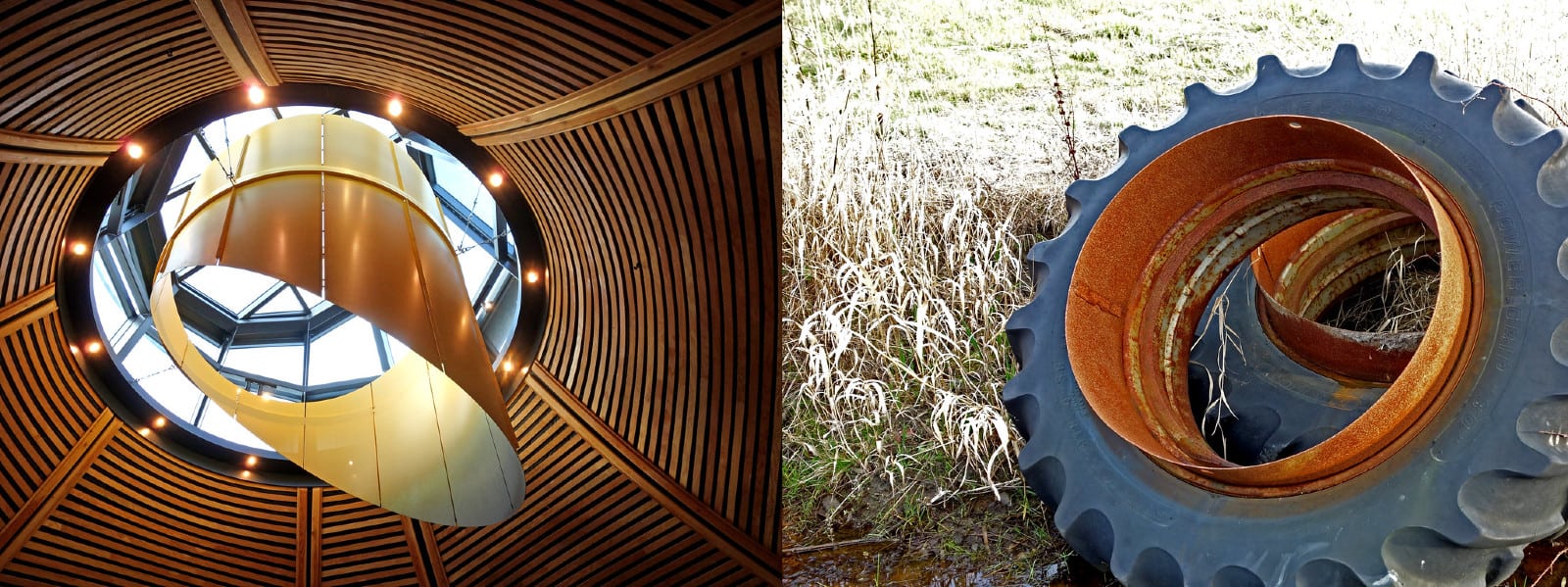|

The vision of a low carbon future brings its own challenges when it comes to maintaining an effective electricity supply system. Mathematicians are working to give decision makers richer understanding, greater flexibility and a more solid evidence base on which to inform their important choices.
|
|

The computer animation industry relies on a steady stream of mathematics to produce the fantastic images found on our cinema and television screens. Advances in mathematics also fuel developments in other areas of 3D modelling, such as car design.
|
|

There are almost 30 million cars on UK roads, covering a total of around 250 billion miles every year. Mathematics plays a key role in designing parts for these vehicles, including the bonnet, allowing them to meet performance targets whilst adhering to strict environmental and safety regulations.
|
|

As oil supplies become harder and more expensive to reach, it’s essential that we maximise the yield from available reservoirs in any way possible. Mathematicians are contributing with a tool inspired by biological evolution that seeks out the best way to extract the oil.
|
|

Computers and networks stuffed with ever-increasing amounts of data are transforming our society, creating a digital world with its own rules and behaviours. We need mathematicians who understand this new world and can turn data into useful information for the benefit of society as a whole.
|
|

Rogue waves appear without warning, towering high over ships and oil rigs. Traditional mathematical models couldn’t predict the occurrence of these dangerous waves, but the latest techniques let oceanographers make accurate forecasts. The research helps to protect our trade, energy and food supply routes.
|
|

Whether or not we share our galaxy with other intelligent life is a question that has been asked for centuries. Modern telescopes are finding planets beyond our solar system at an ever increasing rate, but it’s mathematics that tells us if those planets could be like the Earth.
|
|

Every second counts in the fast-paced world of Formula One, so race teams use advanced mathematics to squeeze the best performance out of their cars. Computational fluid dynamics lets car designers quickly test out new ideas before deploying them on the racetrack.
|
|

Many viruses have a symmetrical structure made from basic building blocks, and biologists have struggled to explain some of the more detailed shapes. Now, mathematicians are using complex theories of symmetry to reveal these viral structures, ultimately leading to new treatments for diseases.
|
|

In order to minimise the risk as people gather together, mathematics is increasingly being used to model the situation and arm organisers with the tools they need to keep everyone safe.
|
|

With fossil fuels running out, the race is on to find the best power source for the future. Fusion, the process that powers the Sun, could be the answer and mathematics is crucial in designing the power stations that could copy it.
|
|

Many industrial processes involve the complex moment of fluids, but predicting fluid behaviour can often be difficult. Mathematical models of fluid flow can help to improve manufacturing efficiency and reduce costs, while also enabling new applications of fluids within industry.
|
|

In the search for cleaner and greener sources of energy there are many options on the table. Mathematics is helping to develop a method which harnesses the power of the Sun to unlock the energy of the hydrogen that lies hidden in water.
|
|

With ever more people purchasing things online, there is a greater potential reward for internet fraudsters. Mathematics helps make sure your money doesn’t end up in the wrong hands.
|
|

Blood-related diseases can seriously harm patients’ quality of life and even lead to death. Many of these diseases are caused by problems with the flow of blood in the body, and using mathematical models to understand how and why these occur can help save lives.
|
|
 With a billion journeys taken on UK railways every year, railway stations are a vital part of our national infrastructure. Mathematics is helping to design the next generation of railway stations, ensuring they provide a comfortable environment for the travelling customer. With a billion journeys taken on UK railways every year, railway stations are a vital part of our national infrastructure. Mathematics is helping to design the next generation of railway stations, ensuring they provide a comfortable environment for the travelling customer.
|
|

It is crucial that as UK armed forces continue to deploy to destinations across the globe, they have the best tools at their disposal. As such, mathematical analysis is playing an increasingly important role alongside tanks and guns in their military arsenal.
|
|
 With an increased appetite for renewable energy sources, eyes are turning towards the abundance of water surrounding the British Isles. Harnessing marine power effectively requires detailed mathematical analysis. With an increased appetite for renewable energy sources, eyes are turning towards the abundance of water surrounding the British Isles. Harnessing marine power effectively requires detailed mathematical analysis.
|
|

The modern military is equipped with many tools, gadgets and weapons. However, mathematics is a powerful tool too as it helps simulate training environments to keep the military at the top of their game.
|
|

Epidemics can threaten the lives of both humans and animals, so it is essential that we react swiftly to any outbreaks. Mathematicians play a key role in assessing the risks of disease transmission and modelling the effects of vaccination programmes.
|
|

Modern society relies heavily on a variety of networks, but we don’t fully understand how they behave. Mathematical network theory lets us create models of our communication and transport networks, revealing new patterns and insights that will improve network capacity, reliability, and efficiency.
|
|

Air-traffic control is a vital part of the aviation system that contributes billions of pounds annually to the UK economy. Without mathematics, however, the radar antennas that underpin the network of primary and secondary surveillance radars operating to ensure the safety of air vehicles operating in and beyond UK airspace would take longer and require more effort to calibrate.
|
|

Official estimates suggest the number of cycle journeys in the UK could be declining. With a leading transport charity arguing otherwise, mathematics is being used to paint the true picture of cycling in the UK in order to secure important government funding.
|
|

The latest generation of optical fibres can be used for a wider range of applications, but their complicated internal structure makes them difficult to produce. A mathematical model of these new “holey fibres” promises to simplify the manufacturing process and reduce the cost of development.
|
|

The NHS spends £12 billion a year on medicines many of which come in the form of tablets. Mathematics is being used during the drug design process to help ensure their effectiveness.
|
|

Mathematical image processing techniques make it possible for us to capture, transmit and store photographs and video. They also let us restore noisy or damaged images and extract useful information from visual data.
|
|

Our understanding of climate change draws on expertise from a variety of scientific disciplines, but climate models ultimately rely on advanced mathematical equations. Even the fastest computers in the world can struggle to solve these equations, so we need to deploy new mathematical techniques in the fight against global warming.
|
|

In the information age the computer chip is key — the average person will probably utilise the power of many integrated circuits several times before they even leave the house each day. With worldwide demand for their wares, the work of computer chip designers is big business. But, with the cost of making the first prototype of a chip running into the millions, getting it wrong can be an expensive mistake.
|
|

Much of the UK’s coastline is undergoing erosion, placing homes, businesses and other important coastal sites at risk. Mathematical modelling can enable us to understand both the short- and long-term processes that lead to erosion, and help protect the nation’s coast.
|
|

Contact centres pervade modern life, whether it is calling up your bank or utility providers. These companies are increasingly employing mathematical techniques to make sure you stay on the phone for as little time as possible.
|
|

Residents of towns under the flight paths of major airports can be plagued by intrusive aircraft noise. However, mathematics is helping quell the noise through better engine design, enabling airlines to stick to ongoing noise reduction targets.
|
|

Brain scans play a vital role in the treatment of many serious medical conditions, but decoding the signals inside our minds would not be possible without a variety of mathematical techniques.
|
|

The amount of information we can transmit though the air is limited by the laws of physics, but the mathematics of signal processing lets us squeeze more data into the same amount of space. As a result, we get better, cheaper and faster mobile phone calls.
|
|

It is essential that the biometric systems we depend on for national security can reliably identify individuals and aren’t easily deceived. A range of mathematical techniques ensure these systems work as intended, helping to keep the UK safe.
|
|

Sequencing the human genome was a fantastic achievement, but it was only the beginning. Now, statisticians are coming up with new methods to sift through large amounts of genetic data and identify the differences in DNA that can lead to diseases.
|
|

Risks are an unavoidable part of modern life, but mathematicians and statisticians have developed a variety of methods to help mitigate its effects. These techniques enable hospitals, banks and other organisations to make better decisions, based on evidence and facts.
|
|

Cod stock numbers within the North Sea have already been depleted by decades of over fishing. Mathematical modelling now suggests that the North Sea population of cod and other commercial fish stocks could also feel the effects of a warming planet unless they can adapt fast enough.
|
|

Understanding how to manipulate tangles of DNA could help us create new treatments for diseases, so mathematicians are working with biologists to explain how our genetic code becomes knotted. Their work combines the latest technology with a centuries-old branch of pure mathematics.
|
|

Diabetes is on the rise in the UK, but current methods of directly measuring patients’ blood sugar levels have their drawbacks. Mathematics is playing a crucial role in finding a new, non-invasive, way to monitor the disease.
|
|

Catching a train is part of daily life for many, whether they are commuting to work or heading for a night out. Mathematics could help negotiate the minefield of delays that often accompanies train travel, reducing the risk of arriving late, and so reducing the stress of travel.
|
|

The eruption of the Icelandic Eyjafjallajökull volcano in 2010 not only had newsreaders’ tongues in a twist but called a halt to air travel across much of Northern Europe. It was imperative to get planes safely back into the skies as swiftly as possible and mathematics was at the heart of the solution.
|












































